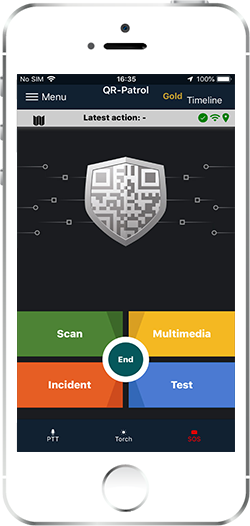Surveillance Kits. Smart Lighting. Plastic Model Kits. RC Toys. Model Paints. Raspberry Pi. LED Lighting. Car Electronics.
- best cell phone spy application for Honor?
- WirelessNetView - Wireless Network Monitoring Software!
- SMS location Apple?
- What Is Packet Loss? How to Fix High Packet Loss With the Best Network Tools;
- What Is Packet Loss?.
Service Parts. Apple Watch. Business Education Wholesale. Generating Print Page.
Home Brands Huawei. PB Part No. Screen Size: 6.
10 Best Network Monitoring Tools & Software of 2020
Supported Networks: Vodafone, 2degrees, Spark, Skinny. Battery Capacity: mAh. Rear Camera: 16 Megapixels. Front-Facing Camera: 16 Megapixels. Storage Size: GB. Colour: Blue. Pickup from 1 store by am tomorrow Ships tomorrow. Colour: Black. Pickup from 11 stores by am tomorrow Ships tomorrow. Rear Camera: 48 Megapixels. Front-Facing Camera: 32 Megapixels. Pickup from 12 stores by am tomorrow Ships tomorrow. Add To Cart. Rethink Possibilities with Huawei 5G.

Rear Camera: 40 Megapixels. Colour: Orange. Colour: Silver. Colour: Purple. Rear Camera: 13 Megapixels. Front-Facing Camera: 8 Megapixels.
How to make sure that Spy Phone App’s activity is not interrupted
Storage Size: 32GB. Screen Size: 5. Supported Networks: Locked to Vodafone.
Front-Facing Camera: 5 Megapixels. Heart Rate Monitor: Yes. Waterproof Rating: 5ATM. MPN: Terra-B MPN: Andes-B Travel Without Limits. Compatible OS: Android. Colour: Gold. MPN: Heart Rate Monitor: Not Specified. Waterproof Rating: Not Specified. Colour: Green.
How do I monitor my kids' cell phone use without seeming intrusive?
Hurry, only 2 units left! Other Popular Huawei Products. Device Colour: Black. Earpiece Design: Open. Impedance: Not Specified. Wireless Technology: Bluetooth. Noise Cancelling: Yes. Interface: Bluetooth. Microphone: Yes. Screen Size: 10 inches. Operating System: Android. Rear Camera: 5 Megapixels. This becomes even more likely on long-distance internet connections because the packets have farther to go and, by extension, more room for error. Unsuccessful packets slow down network speeds, cause bottlenecks, and throw off your network throughput and bandwidth. Packet loss can also be expensive.
There are many causes of packet loss, most of them unintentional. The number one cause of packet loss is network congestion. Think of packets traveling across your network like cars going down a highway. At certain points in the day, like during rush hour or after lunch when all the employees in a large company are going back to their desks, there are too many cars on the road. Things get even worse when a four-lane highway narrows into a two-lane road, and a lot of cars are looking to merge at the exact same time. Highway traffic is a fact of life and so is packet loss.
When network traffic hits maximum capacity, packets will have to wait to be delivered. Unfortunately, packets are the first things to get left behind when a network is trying to catch up with traffic and the connection can only handle so much.
Account Options
Luckily, most software today will circle back for those discarded packets by automatically resending the data or slowing down transfer speeds to give each packet a chance to make it through. Glitchy, old, or otherwise outdated hardware can significantly weaken your network. Firewalls, routers, and network switches all take up a considerable amount of power.
Unchecked bugs in your system can disrupt network performance and prevent it from sufficiently carrying packets. Sometimes rebooting your hardware will solve this, but since bugs are often introduced during hardware updates, the whole thing will need to be patched. Simply put, this means your system is running at a higher capacity than it was designed to handle. In fact, packets on overutilized devices sometimes make it to their destinations, but by then the network is too weak to process the packets and send them back out.
Many devices have buffers in place to put packets in holding patterns until they can be sent out. However, these buffers can get filled up quickly and excess packets are still dropped. We also cannot ignore the possibility of someone deliberately tampering with your network and causing packet loss. Packet drop attacks have become popular with cybercriminals in recent years.
Essentially, a hacker gets into your router and tells it to drop packets. If you notice a sudden drop in packet success or a significant slowdown in network speed, you could be in the midst of an attack. Hackers execute a denial-of-service attack by flooding the network with too much traffic for the network to handle, and it crashes. The attackers then take advantage of this vulnerability.
Here are the Top 25 WiFi tools:
Invest in a SIEM solution , create a disaster recovery plan, update your firewall and, as always, keep yourself up to date on the latest antivirus software. Such attacks are rare—there are more common causes out there for packet issues. Many IT administrators cobble together a networking monitoring system out of different tools. Without a comprehensive, seamless network monitoring solution, opportunities to stop or prevent packet loss fall through the cracks. Wondering how to reduce packet loss? Zero percent packet loss is unachievable because the things causing it, like network issues, too many users, or an overloaded system, are bound to pop up.
Any solutions recommended here or elsewhere are ways to help fix the problem after the fact, not prevent them from occurring. The key to preventing or lessening the impact of packet loss is network visibility. A problem you can see is a problem you can solve.
